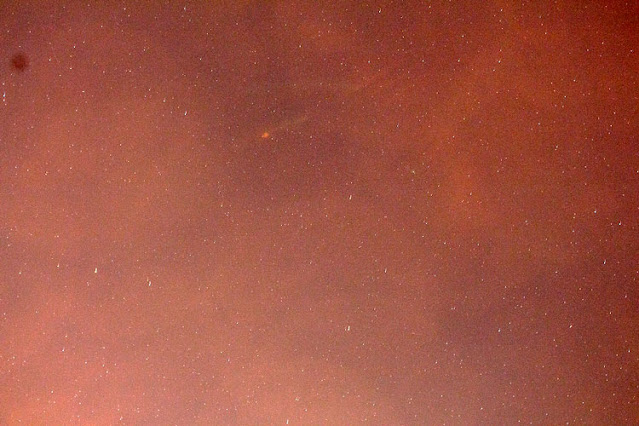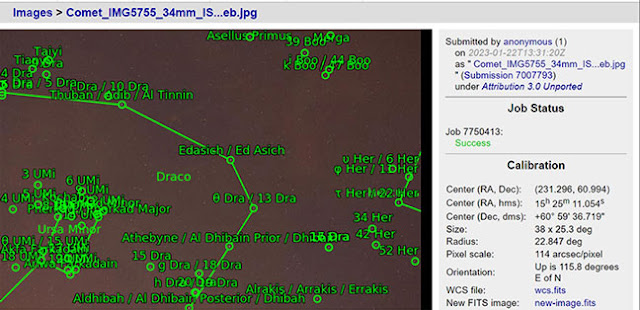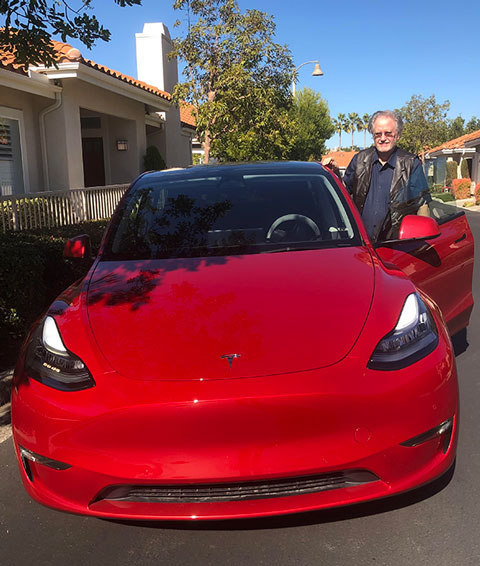Greetings from Palmia Observatory,
Well, we will report on our first attempt to capture Comet ZTF (C/2022 E3), which is predicted to reach magnitude 6.2 and then review some observatory news and finally comment again on AAS41 meeting.
A quick check on the comet's location using GoSkyWatch shows pretty good opportunities for early morning. The comet is rising in the sky overnight and we should have many opportunities before the sun comes up, if those darn clouds and rain stay out of the way.
 |
| GoSkyWatch app predicts viewing angles for comet ZTF(C2022 E3) (Source: Palmia Observatory) |
So, the night sky has been so cloudy lately, but Sunday morning was much better viewing, and this lazy astronomer set out, just before 5:00 am, with his flimsy tripod and DSLR in an attempt to capture the comet. Well, without a computer controlled tripod and no close by visible guide starts to zero in on the comet, the search was sort of hit and miss and take another long exposure and again after some slight adjustment, mostly in elevation. I sort of triangulated between Vega, which had about the same azimuth and Antares, which had about the right elevation and used a wide angle 34-55mm focal length setting to minimize the hunt and seek number of images that that to be taken.
One of my early images had what looked like a comet with a tail, but the astrometry was not right, The photo below had what appeared to be a bright little smudge of light and a tail and also had the right astrometry. If I had seen the little smudge while in the field I could have lengthened the shutter time and tried to get more detail, but that was not to be.
 |
| Possible ZTF Comet (image, high center), DSLR, 34mm, 30 seconds (Source: Palmia Observatory) |
I sort of see a comet like object in the upper middle of the image. The good news is that the astrometry for the image shows should contain the comet. The center of the image matches the right ascension for the comet and the declination is off by about 6 degrees.
 |
| Astrometry.net shows previous image center close to Comet ZTF (Source: Palmia Observatory) |
Sadly, I didn't try to change lenses and get a little more focal length and resolution on the target and I might have found out the first image was not right. Might be able to try getting a better image of the comet in a couple of days.
In other news, we had to switch out a toll road transponder with a newer version. The older version was not working very well and when we received our new Tesla Model Y, it was time to upgrade. Note how the new transponder on the left in the image below is just contained all in a a flexible sort of circuit board and has a self adhesive backing that can is used to mount the transponder on the automobile windshield. This tiny size is pretty impressive compared to the older model, on the right side, that probably contains a printed circuit board with various chips and components soldered on to it.
 |
| Wow, new transponder technology really shrinks system size (Source: Palmia Observatory) |
So here you can just barely see the new transponder on the driver's side windshield.
 |
| New transponder for new Tesla Model Y (Source: Palmia Observatory) |
Some people have asked why we got a new Tesla and if we had done a lot of research and evaluated how much it supports moving away from burning fossil fuel, etc., and all I could say is no, I just sort of assumed that it was a good deal for the environment and I liked the performance of the car and had always been impressed with the inventiveness and innovation of Elon in his other SpaceX endeavors too. As far as helping the environment, I recently learned that the car probably will reach a net reduction in total CO2 reduction improvement in about 2 years. Over this time period the reduction of CO2 will cover all of the CO2 produced during the manufacture of the car. The payback period changes a little bit depending on the amount of green electricity used to charge the car.
I remember back about 11 years ago, I sort of decided that when the time comes to get a new car, that I would get an all electric car. This desire originated at that time by working on various hybrid electric propulsion systems for ships. One case study at that time was this article in the Naval Engineers Journal. The study evaluated the benefits, costs and feasibility of adding hybrid drive capability to existing ships and how in the future it could be possible to build "the All Electric Ship."
 |
| Resident Astronomer's interest in electric drive technology from 11 years ago (Source: Wiley.com) |
Ok, now let's return to providing a few comments on the recent AAS241 meeting. I attended several of the online plenary sessions and was very impressed by John Mather, JWST Senior Project Scientist, and his discussion of some of the findings and future steps being planned to further understanding of the universe. In one of his slides, he mentioned how JWST can collect multiple spectra at one time and how the redshift observed for many galaxies has now been pushed out to Z > 10.
 |
| Some preliminary JWST spectra results for z > 10 (Source: John Mather, AAS241) |
Another finding is that with JWST we can find a star lensed by every cluster. This provides more opportunities to measure the mass of those clusters.
 |
| JWST finds stars imaged by gravitational lens for every cluster (Source: John Mather, AAS241) |
As a consequence of being able o look further back in time, JWST was able to identify some of the oldest galaxies and how their age indicates that they formed much more quickly after the big bang than was currently expected by most galactic formation models. Hmm, sounds like some more tension and a chance to update galaxy formation models.
 |
| JWST finds many old galaxies seem to form much earlier than expected (Source: John Mather, AAS241) |
JWST is a magnificent tool that adds to the growing knowledge about the structure of the universe. Mather hints that many more Nobel prizes will come from observations made with the JWST. Check out the earlier group of Noble prize winners for astrophysics theories from just his last decade.
 |
| Recent Nobel prize winners for discoveries in astrophysics (Source: John Mather, AAS241) |
 |
| JWST will make impressive findings, but new observatories will solve even more difficult questions and problems (Source: John Mather, AAS241) |
Hmm, Mather recommends that we work on impossibly difficult problems. Hmm, for me now I have hard enough time just remembering new physics seems to call for forgetting some old physics. In the meantime, I'll just sip on my martini and try my hand at completing the blank half of the bar coaster! On review, I guess I just relied on some sense of symmetry in trying to complete the open half!
 |
| When physics gets you down, sip a martini and try your hand at drawing on the bar coaster (Source: Palmia Observatory) |
Until next time,

No comments:
Post a Comment